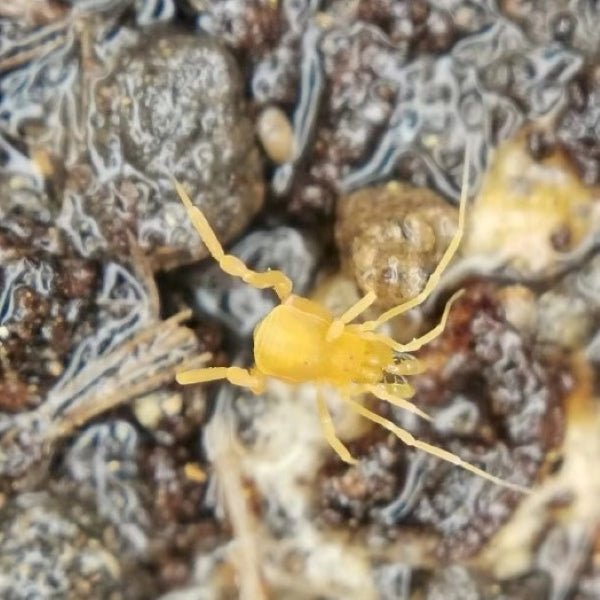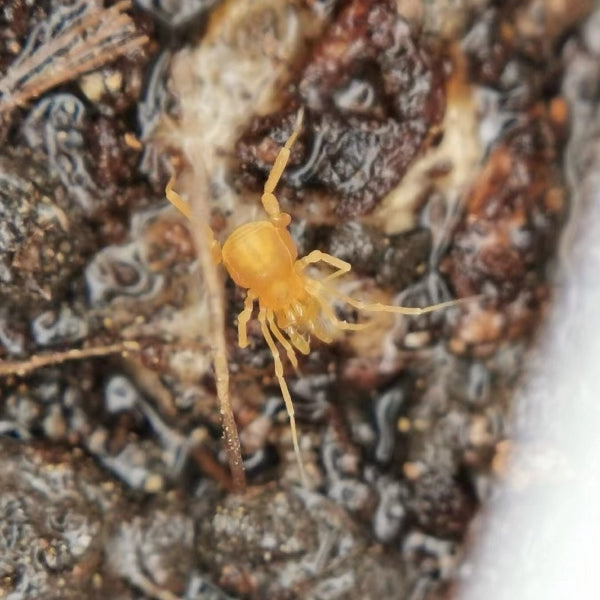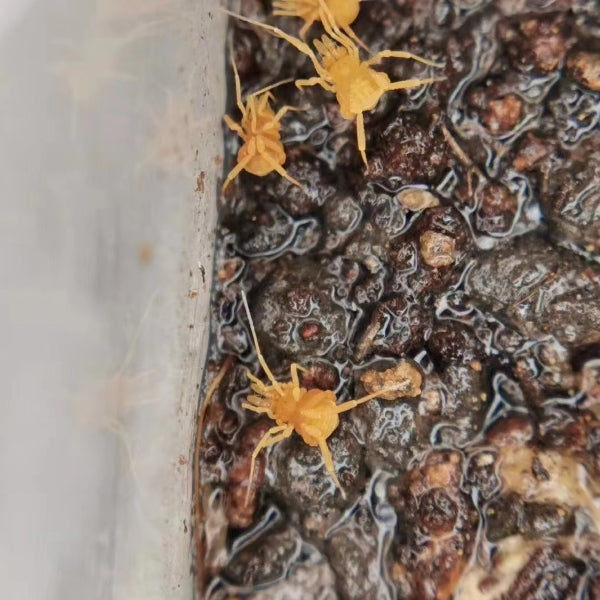My Home Nature
Opiliones sp. whole yellow
Opiliones sp. whole yellow
Couldn't load pickup availability
- Compared to spiders, Opiliones sp. whole yellow have no obvious segmentation in the healing of their head, chest, and abdomen, and this feature can quickly distinguish between blind spiders and spiders. The mouthpiece is located in the upper middle position of the abdomen, usually below the end of the claw limb, and consists of four structures similar to teeth.
- Most of Opiliones sp. whole yellow are omnivorous. Blind spiders will hunt small prey or pick up dead bodies. When hunting with weak limbs, they will use the hooks at the end of their limbs to control the prey, and then stand up to pull the prey off the ground to prevent it from coming into contact with the ground and escaping. In addition to hunting small prey, they also eat fungi, fruits, and other foods.
- Laniatores sp. of Opiliones sp. whole yellow can quickly kill their prey with their huge tentacles. Then use the claws to chew and extract the body fluids of the prey, and the mouthparts secrete digestive fluid to assist in chewing and sucking on the body fluids of the prey. Some Laniatores sp. of Opiliones sp. whole yellow also specialize in hunting soft prey such as mollusks and insect larvae.
- Opiliones sp. whole yellow is difficult to be captured. In order to catch it,we can only search for it in the cave at night on tree trunks or soil slopes, and some may hide under rocks.
-Daily food can be fed to the bodies of cockroaches, bread worms, or small living organisms such as termites. Some can also feed on fruits. Opiliones sp. whole yellow have a large appetite, and if they are raised in groups, they must maintain sufficient food, otherwise they may easily devour each other.Opiliones sp. whole yellow lay eggs in spring, and the eggs hatch for about a month. The hatchlings are raised in the same way as adults.
- CARE GUIDELINES:
| Temperature: | 70-80°F (21-27°C) |
| Humidity: | 70-80% |
| Feeding: | bodies of cockroaches, bread worms, or small living organisms |
| Size: | Body:0.12-0.2"(0.3-0.5cm), Total length:0.32-0.4"(0.8-1cm) |
Share






